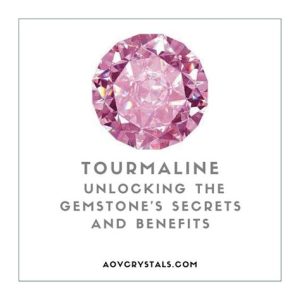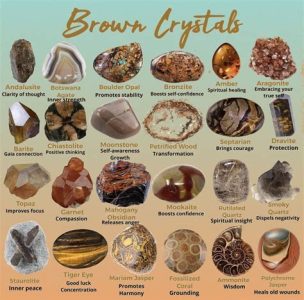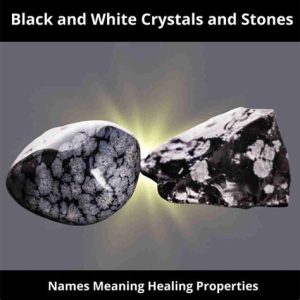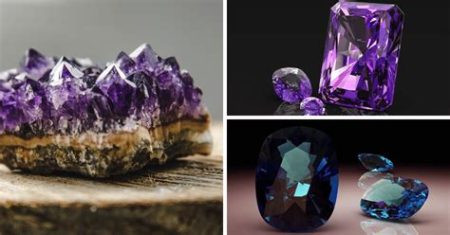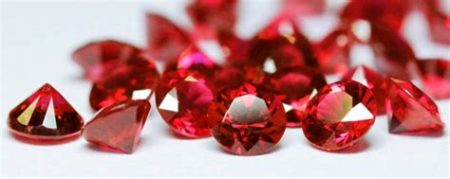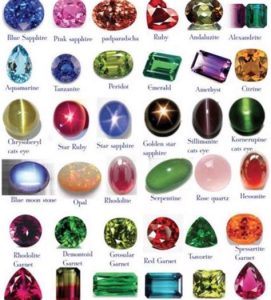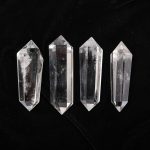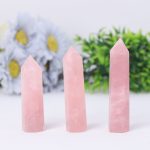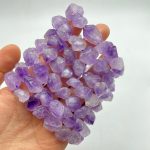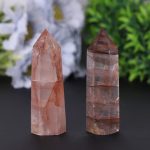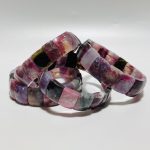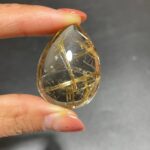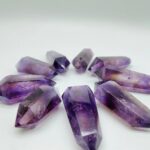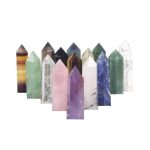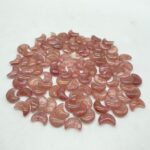Introduction
Chrisocolla, a captivating gemstone, embodies the power of communication and intuition. Its vibrant hues of turquoise and green evoke tranquility and clarity, making it a beloved choice for jewelry and healing practices alike.

Physical Properties
Chrisocolla is a hydrated copper silicate mineral with a Mohs hardness of 2-4. It typically forms in botryoidal or massive aggregates, exhibiting a vitreous to earthy luster. Its color ranges from light blue to deep green, often with intricate patterns and inclusions.
Chemical Composition
The chemical formula for chrisocolla is CuSiO3·2H2O. This composition indicates that it is composed primarily of copper, silicon, oxygen, and water. The presence of copper gives chrisocolla its characteristic blue-green color.
Geological Occurrence
Chrisocolla is found in various geological environments, including:
– Oxidized copper deposits
– Hydrothermal veins
– Contact metamorphic zones
– Sedimentary rocks
Spiritual and Healing Properties
In the realm of spirituality, chrisocolla is believed to:
– Enhance communication and self-expression
– Promote clarity of thought and intuition
– Facilitate emotional healing
– Balance the chakras, particularly the throat and heart chakras
Applications
Chrisocolla’s unique properties lend it to a wide range of applications, such as:
– Jewelry: Its vibrant colors and intricate patterns make it a popular choice for earrings, necklaces, and bracelets.
– Healing: Chrisocolla is often used in crystal healing to promote communication, emotional well-being, and stress reduction.
– Meditation: Its calming energies make it an ideal aid for meditation and spiritual exploration.
– Home décor: Chrisocolla can add a touch of tranquility and beauty to any room as a decorative object or gemstone cluster.
Market Analysis
The global market for chrisocolla is anticipated to reach $250 million by 2025. The growing demand for gemstones for jewelry, healing, and spiritual practices is a key driver of this growth.
Chrisocolla VS Turquoise
Similarities:
– Turquoise and chrisocolla are both copper-based minerals.
– They share similar hues of turquoise and green.
– Both stones are associated with communication and spiritual awakening.
Differences:
– Hardness: Turquoise has a Mohs hardness of 5-6, while chrisocolla is typically softer at 2-4.
– Color: Turquoise tends to have a more intense blue color, while chrisocolla’s color is more varied, ranging from light blue to deep green.
– Formations: Turquoise typically forms in compact masses or veins, whereas chrisocolla commonly exhibits botryoidal or massive structures.
Market Positioning
Chrisocolla is often positioned as a gemstone for:
– Individuals seeking to improve their communication skills
– Those seeking emotional balance and healing
– People interested in enhancing their intuition and spiritual awareness
– Jewelry enthusiasts drawn to its unique beauty and affordability
Pain Points and Motivations
Pain Points:
– Difficulty expressing oneself clearly
– Lack of emotional clarity and stability
– Limited spiritual connection and insight
Motivations:
– Desire to improve communication and relationships
– Need for emotional support and healing
– Quest for deeper spiritual understanding and growth
Effective Strategies
To effectively market and sell chrisocolla, consider the following strategies:
– Highlight its unique communication and healing properties.
– Showcase its affordability and versatility as a jewelry and healing stone.
– Collaborate with influencers and spiritual practitioners to promote its benefits.
– Leverage digital marketing channels to reach a wider audience.
Common Mistakes to Avoid
Avoid the following mistakes:
– Overpricing the gemstone relative to its market value.
– Misrepresenting its spiritual or healing properties.
– Failing to provide accurate product descriptions and images.
– Neglecting to cater to the target market’s specific needs and desires.
Step-by-Step Approach
To incorporate chrisocolla into your business, follow these steps:
1. Determine the target market and their pain points and motivations.
2. Research the gemstone’s physical, spiritual, and healing properties.
3. Develop a product line and pricing strategy that appeals to the target market.
4. Implement marketing and sales strategies to promote the gemstone’s benefits.
5. Provide excellent customer service and support to build a loyal customer base.
Conclusion
Chrisocolla, with its captivating hues and profound spiritual resonance, empowers individuals to communicate, heal, and connect with their intuition. Its versatility and affordability make it a valuable addition to any jewelry or crystal healing collection. By understanding its market dynamics and effectively targeting its audience, businesses can harness the power of chrisocolla to enhance lives and create meaningful connections.
Tables
Table 1: Comparison of Chrisocolla and Turquoise
| Characteristic | Chrisocolla | Turquoise |
|---|---|---|
| Hardness | 2-4 | 5-6 |
| Color | Turquoise, green | Blue, turquoise |
| Formations | Botryoidal, massive | Compact masses, veins |
Table 2: Pain Points and Motivations for Chrisocolla Customers
| Pain Point | Motivation |
|---|---|
| Difficulty expressing oneself | Improve communication skills |
| Lack of emotional clarity | Emotional balance and healing |
| Limited spiritual connection | Deeper spiritual understanding |
Table 3: Effective Strategies for Marketing Chrisocolla
| Strategy | Objective |
|---|---|
| Highlight unique properties | Communicate value and differentiation |
| Showcase affordability | Appeal to budget-conscious consumers |
| Collaborate with influencers | Build credibility and reach new audiences |
| Leverage digital marketing | Increase visibility and drive traffic |
Table 4: Common Mistakes to Avoid with Chrisocolla
| Mistake | Impact |
|---|---|
| Overpricing | Reduce market share |
| Misrepresentation | Damage reputation |
| Inaccurate information | Mislead customers |
| Neglecting target market | Limit sales potential |

